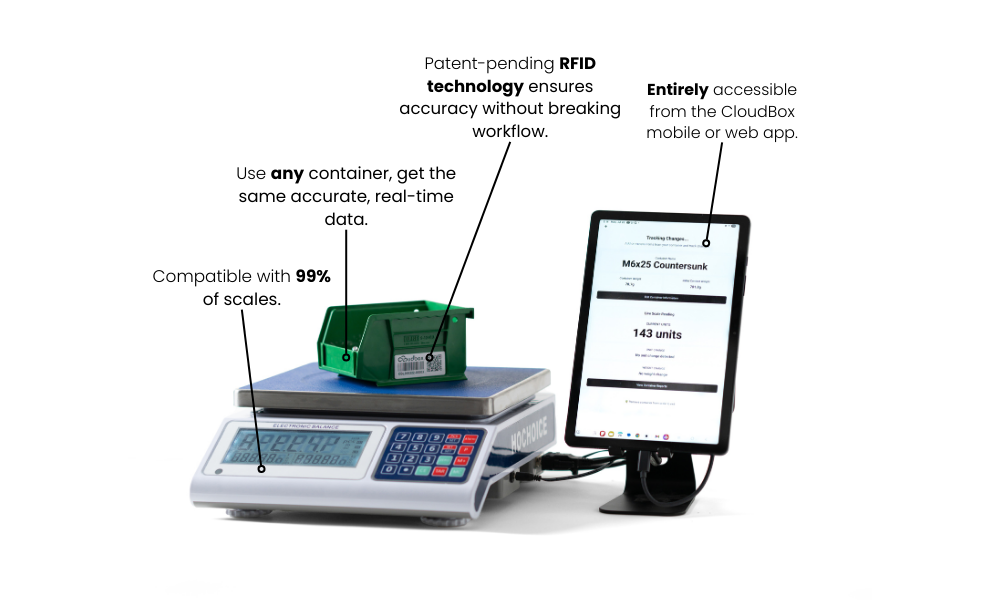
In industrial environments, efficiency is everything. Products need to move in, through, and out of your facility with speed and accuracy. For many businesses, though, there is one part of the operation still stuck in the past: manual inventory logging.
Whether it is a clipboard in the breakroom, a shared spreadsheet updated at the end of a shift, or a whiteboard with the day’s numbers, too many facilities still rely on human memory and handwritten notes to manage thousands of dollars’ worth of product.
It might seem harmless at first. But those small mistakes and outdated processes come with real costs. And the bigger your operation, the more those costs add up.
Paper Logs Are Not Just Inconvenient. They Are Expensive.
Let’s look at an average industrial facility. You have a few dozen workers, hundreds of SKUs, and a steady stream of incoming and outgoing materials. Every time someone logs an item manually, there is a chance for error. That might be a missed decimal, a skipped line, or even a forgotten entry during a busy shift.
One operations lead we spoke to admitted that they routinely found discrepancies of up to ten percent between logged numbers and actual counts. That ten percent directly affects ordering, production timing, shipping accuracy, and customer satisfaction.
Now multiply that across several product lines and dozens of shifts. The labor hours spent correcting mistakes, retraining staff, and running surprise cycle counts can easily reach thousands of dollars each quarter.
And in some industries, the consequences are even more severe. For facilities that operate under strict compliance rules, a missed log or incorrect count could mean fines, shutdowns, or even lawsuits.
The Human Factor: Where Mistakes Multiply
Even the most reliable worker can get distracted. Someone might forget to update the log during a rush. Another might misread a handwriting entry or transpose two numbers. These moments do not feel like disasters. But over time, they create blind spots that weaken your operation.
The real issue is not that humans make mistakes. It is that the system leaves no room to catch them until it is too late.
When you rely on paper logs or static spreadsheets, you are always looking backward. By the time you notice something is off, the shipment has gone out, the customer has complained, or your stockroom is short on critical components.
That is not a sustainable way to run a business.
What Is the Real Cost?
The biggest cost of manual logging is not just labor or time. It is visibility. When you cannot see your inventory in real time, you cannot make informed decisions. You order too much of one item and not enough of another. You pay for rush shipping to fix errors. You hold up production waiting on confirmation of what is actually available.
In industrial environments, that lack of insight can slow your entire process.
A plant manager in Texas told us they used to update their inventory logs every Friday afternoon. By Monday morning, the information was already outdated. They were constantly playing catch-up, making guesses instead of decisions.
After moving to an automated system, they cut their reorder errors in half. They also reclaimed four hours of labor every week. That is over 200 hours a year, recovered without changing their staff size or workflow.
The Case for Real-Time Inventory Logging
Smart systems like CloudBox remove the need for manual tracking entirely. Each unit tracks what is added, removed, or adjusted, and sends that data directly to your dashboard. You do not need your team to stop what they are doing and write things down. The log is created for them, in real time, with no extra steps.
This has two big effects. First, it reduces human error dramatically. Second, it allows your managers to focus on higher-value tasks, rather than babysitting spreadsheets.
CloudBox units also make it easier to audit your process. If a customer calls about a missing part, you can trace the product’s status instantly. If a vendor short-ships a delivery, you will know immediately instead of discovering it during a surprise count.
A Better Way Forward
We get it. Change takes time. But moving from manual logs to automated inventory is not about adding complexity. It is about removing uncertainty.
Your team already works hard. Give them a system that supports that effort instead of leaving them to clean up behind outdated tools.
Manual inventory might seem like a small inconvenience today. Over time, though, it becomes a growing liability. Switching to real-time tracking is not just an upgrade. It is a step toward a more accurate, more efficient, and more profitable operation.
.avif)

.png)




.png)

.png)
.png)




